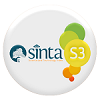SINTREN ART SHOW (THE ANALYSIS OF THE DECLINING OF HISTORICAL AWARENESS HAPPENING IN THE COASTAL BORDER OF WEST JAVA AND CENTRAL JAVA AND ITS CONTRIBUTION TO THE HISTORY LEARNING)
Abstract
Keywords
References
Adam, A.V. (2001). “Pengendalian Sejarah”. Dalam Daniel Dhakidae (Ed). 1000 Tahun Nusantara. Jakarta: Penerbit Kompas.
Creswell, J.W. (1994). Research Design Qualitative & Quantitative Approach. London: Publications.
Hadisastro, S. (1999). Sintren Batang: Kesenian Pinggiran yang Terpinggirkan. Jakarta: Departemen Pendidikan dan Kebudayaan
Hakam, K. A. (2000). Pendidikan Nilai. Bandung: CV Maulana
DADANG SUPARDAN
Sintren Art Show : The Analysis of the Declining of Historical Awareness Happening in the Coastal Border
of West Java and Central Java and Its Contribution to the History Learning
Kartodirdjo, S. (1992), Pendekatan Ilmu Sosial Dalam Metodologi Sejarah, Jakarta: PT. Gramedia Pustaka Utama.
Keputusan Menteri Pendidikan dan Kebudayaan tanggal 13 Juli 1987 No. 014. Ga/U/87, Jakarta: Departemen Pendidikan dan Kebudayaan RI.
Miles, M., dan Huberman, M. (1992). Analisis Data Kualitatif: Buku Sumber tentang Metode-metode Baru. Translated by Tjetjep Rohendi Rohidi. Jakarta: UI Press.
Mundardjito. (1986). “Hakikat Local Genius dan Hakikat Data Arkeologi”. Dalam Ayatrohaedi. Kepribadian Budaya Bangsa (Local Genius), Jakarta: Pustaka Jaya, (39-45).
Namier, L.B. (1957). The Structure of Politics at the Accession of George III. Basingtoke: Macmillan.
Niebuhr, R. (1949). Faith and History. New York: Scribner.
Purnama, Y, dkk,. (2004). Budaya Tradisional pada Masyarakat Indramayu. Bandung: Kementerian Kebudayaan dan Pariwisata, Balai Kajian Sejarah dan Nilai Tradisional Bandung.
Saunders, M. (1982). Multicultural Teaching: Aguide for the Classroom, London: McGraw-Hill Company.
Sedyawati, E (1986). “Local Genius dalam kesenian Indonesia”. Dalam Ayatrohaedi. Kepribadian Budaya Bangsa (Local Genius). Jakarta: Pustaka Jaya, (186-192).
Simbolon, P. T (2000). “Indonesia Memasuki Milenium Ketiga”, dalam 1000 Tahun Nusantara. Jakarta: PT Kompas Media Nusantara.
Sindhunata. (2000). “Demitologisasi Persatuan Nasional” dalam 1000 Tahun Nusantara. Jakarta: PT Kompas Media Nusantara.
Sjamsuddin, H. (1996). Metodologi Sejarah. Jakarta: Depdikbud, Proyek Pendidikan Tenaga Akademik.
Spradley, J. (1997). Metode Etnografi.Penerjemah Misbah Zulfa Elizabeth. Yogyakarta: Tiara Wacana.
Surjomihardjo, A. dan Abdullah T. (1998). Ilmu Sejarah dan Historiografi Arah dan Perspektif. Jakarta: PT Gramedia.
Soebadio, H. (1986). Kepribadian Budaya Bangsa. Dalam Ayatrohaedi, Kepribadian Budaya Bangsa (Local Genius). Jakarta: Pustaka Jaya, halaman 18-25.
Soedjatmoko. (1995). “Sejarawan Indonesia dan Zamannya,” dalam Historiografi Indonesia: Sebuah Pengantar. Jakarta.
Soedjatmoko. (1985). Etika Pembebasan, Pilihan Karangan Tentang Agama, Kebudayaan, Sosial dan Ilmu Pengetahuan. Jakarta: LP3ES.
Soedjatmoko. (1976). ”Kesadaran Sejarah dan Pembangunan”, in Prisma N0.7. Tahun V, Jakarta. LP3ES, hal. 9-l6.
Sujatmiko, G. (1999). Perbedaan Nasionalisme Generasi Tua dan Muda. Makalah Seminar Nasional di Universitas Indonesia (Tidak dipublikasikan)
Triardianto dan Suwardiman. (2002). Indonesia dalam Krisis. Jakarta: Penerbit Kompas.
Umar, K. (1981). Seni, Tradisi, Masyarakat. Jakarta: Sinar Harapan.
Yudistira, D. W. (2007). Sintren. Jakarta: Grasindo.
Wales, H.G. Quartrich (1948) “The Making of Greater India: A Study in South-East Asia Culture Change”, Journal of Royal Asiatic Society, (2-32).
DOI: https://doi.org/10.17509/historia.v13i1.7695
Refbacks
- There are currently no refbacks.
Copyright (c) 2024 Historia: Jurnal Pendidik dan Peneliti Sejarah
INDEXED
TOOLS

This work is licensed under a Creative Commons Attribution-ShareAlike 4.0 International License.
Alamat Redaksi: Gedung Numan Soemantri, FPIPS UPI, Departemen Pendidikan Sejarah, Lantai 2, Jl. Dr. Setiabudhi No 229 Bandung, 40154






